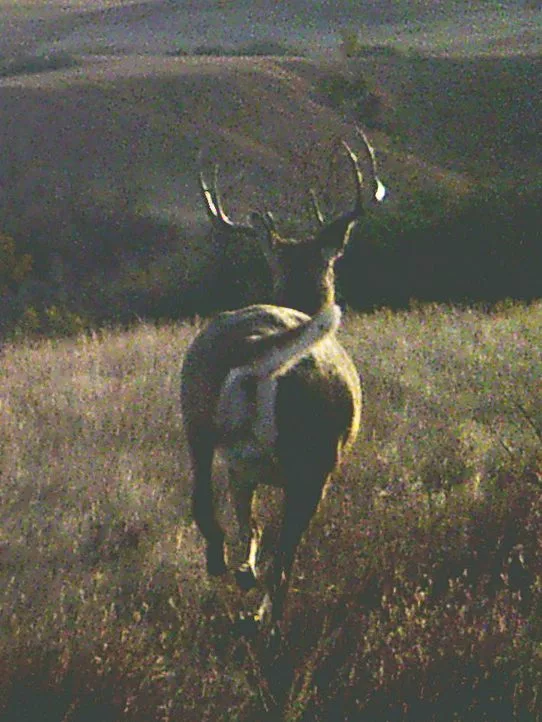
Turn Tail? Hunters and anglers aren’t the types to give up easily, and creative thoughts on securing more conservation acres and places to hunt and fish are at the forefront of new plans to address the future of our open spaces and places to recreate. Simonson Photo.
By Nick Simonson
During that Chuck Norris phase of the pre-social internet, where all the memes, themes and funny sayings hyped up the legend of TV’s most famous Texas Ranger and movie-making martial artist, my favorite adage to come out of the grassroots online production was: “Chuck Norris never retreats, he just attacks in a different direction.”
It’s a great adage for our time spent in the outdoors too, whether trying to trip up a tricky buck and get him into shooting range or fool some finicky mid-winter walleyes following a cold front. The first plan of attack may not always work, but that doesn’t mean it’s time to pack up and head home or simply call it a season out of frustration. Each hunt, on-ice adventure, or venture onto open water provides an opportunity to learn, adjust to the conditions as they present themselves, and make notes from each outing to help with the next and prepare an alternative plan of attack for our future time on stand or on the water. Sure, conditions may shift the next time out, but the lessons we take can have their corners rounded a bit to fit into the new parameters we experience.
It’s evident too on a broader scale that things relating to the outdoors are changing, with regulations, economic factors, and changes in society’s viewpoints and even the way we interact with nature are impacting outdoor access, usage, wildlife populations and other elements that factor not only into hunting and angling success (however you may define it) but also the quality of the natural world.
The easiest example is the changes in our conservation reserve program (CRP), and such a quick reference has almost become trite among conservationists, hunters, and even outdoors columnists. But if you’ll bear with me, where once our nation sported more than 32 million acres enrolled nationally in the set-aside program around 2004, we now find ourselves hovering near that 27-million-acre mark, meaning 5 million acres of grassland is now likely row crops. Odds are, those acres won’t return to the landscape, or if they do, they would need to be made more attractive by agencies and the federal government, to compete with commodity prices and subsidy and insurance programs which cover failed plantings on these less productive acres. It may be that we can never see success on the conservation battlefield like we did 20 years ago, but that doesn’t mean a counterattack, or several possible options to achieve victory for wildlife and conservation aren’t available.
Through the efforts of conservation groups and via partnerships with business that are linked to the outdoors, and some that aren’t, we’re seeing private programs sweetening the deal for habitat-minded landowners across the country to explore set-aside programs again and create more access in the process. Once such example is South Dakota’s PATH program, where the state’s Department of Game, Fish & Parks works through organizations like Pheasants Forever and various recruited corporate sponsors to raise one-time bonus payments to landowners at the time of their enrollment in the agency’s public access program. It’s a novel idea that’s taking hold elsewhere and is a plan of attack adjusted to the environment in which modern conservation exists, and one which if the incoming administration’s plan is to cut federal programs or large chunks of their funding, will likely be the future of securing quality habitat and places to hunt and fish. It’s innovations like these that are required to lean in against today’s conservation headwinds with an emphasis on the goodwill and commercial benefits in the corporate donation sphere.
While the past provides a guide, the times they are always a-changing, requiring fresh insight and something beyond what worked 20 years ago to understand modern hunters and anglers, the next phase of conservation, and the future of fishing and hunting under the North American Model of Conservation. It’s up to us, as the gun-toting, rod casting, screen-scrolling, EV-driving, modern sportsmen and women to come together and advance new ideas like the PATH program and explore others that will innovate new plans of attack for the future…in our outdoors.
